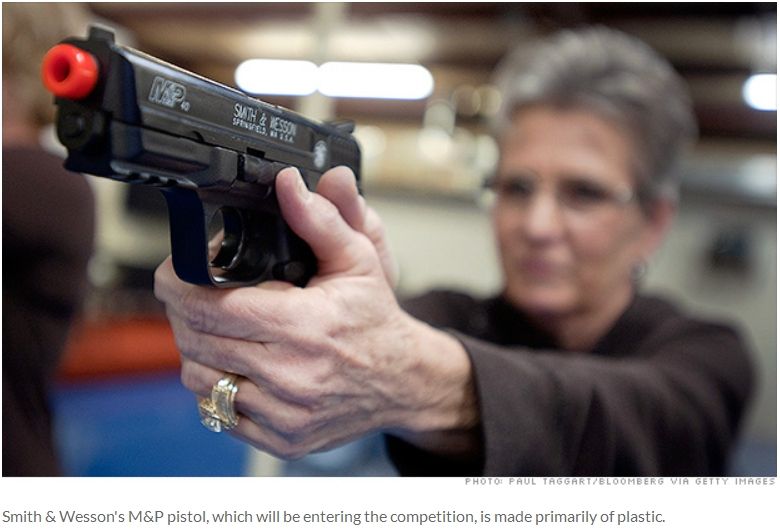Scott Ott, Bill Whittle and Stephen Green discuss the recent film Fury, and the Hollywood treatment of Americans at war.
Bear in mind, none of them had actually seen the film when this was made. Please watch before continuing:
[youtube https://www.youtube.com/watch?v=gEN02UrmQiE?rel=0]
I saw the film on Friday, and my favorite Merchant O’Death saw it Sunday. MO’D is a Marine from a military family, and an armor enthusiast. I asked his opinion of the Trifecta you just watched. Here’s his response:
By happenstance, my paternal grandfather was a tank commander in the 3rd Armored Division in WWII. The 3rd AD landed in France at Omaha White beach starting on June 23rd, 1944. My granddad was assigned to the 33rd Armored Regiment, one of the units that drove ashore on the 23rd. He fought through the rest of the war, being shot out of three Shermans before being assigned as (I believe) his battalion commander’s driver (in a M-5 Stuart light tank) in the last month or two of the war. His personal decorations were a Purple Heart, a Bronze Star and a Silver Star, the latter being awarded for pulling the other four crew members, who were incapacitated, out of one of the aforementioned tanks under enemy fire. He came home with all of his fingers and toes, but carrying some extra weight in the form of shrapnel in his lower extremities. There is no doubt in my military mind, that he experienced all of the brutality and horror depicted in “Fury”, and some that was not shown in the film. I guarantee that he was very familiar with the dying horses and clouds of flies during the summer of 1944 that “Gordo” talks about in the movie. That really happened. His unit liberated the Nordhausen concentration camp. He fought through the “Battle of the Bulge”. He was there for the battles of Aachen and Cologne. And when it was finally over, he came home to my grandmother. He went to work for the United States Postal Service as a letter carrier and retired as Postmaster of the city of Monterey Park, California raising three sons along the way.
I remember him sharing a few anecdotes of his time in Europe during the war. As a small child, I would listen intently to the stories. When I was older, especially after I had joined the Marine Corps, those anecdotes became very sobering. I had a hard time understanding why my granddad didn’t clank when he walked, and wondered how he could sit comfortably with balls that big. He was a soft-spoken man that looked like an old-time college professor. I never heard him swear once. I only ever saw him drunk one time. I never saw him mad or melancholy. Never once did I hear him refer to the Germans he fought against as any thing other than “the Germans”. Never heard “Nazi”, “Kraut”, “bad guys”, “the enemy” or anything similar come from him when talking about his war time experiences. Never heard him reference the SS except in a historical context. If he harbored any special enmity toward them, I never knew of it.
There is plenty of historical data pointing to acts of brutality committed by both sides during the “War in the West”, but these pale in comparison to what happened on the Eastern Front. While there are stories of something resembling chivalry between the Germans and the Western allies (Adolph Galland allowing the RAF to air drop a pair of prosthetic legs to RAF ace Douglas Bader after the latter was interred in a POW camp), quarter was neither asked nor given in the East. The Germans and Russians had a special kind of hate going on there. I think the recent “fad” of Hollywood depicting American soldiers shooting surrendering German troops or allowing German soldiers to burn to death strikes a sharp blow to the American sense of “fair play” that has been drilled into us since the end of WWII. It has been perpetuated in the myriad war movies made over a 60 year period. Were the scenes of Brad Pitt driving a fighting knife through the eye socket of a German officer and shooting a surrendering soldier in the back with a revolver brutal? Sure they were. Could they have happened in real life? Sure they could. Did they happen in real life? Probably. In the end, it was a movie. Historical fiction, not a documentary. Did these scenes offend me or make me question my own morality or shatter my noble illusion of the “greatest generation”? Nope. Would the movie have been just as effective in delivering it’s message without those scenes? Probably.
My dad, who is a combat vet, has told me on more than one occasion, that if Hollywood made a war movie that ACCURATELY depicted what war was really like, people wouldn’t go see it. A two hour movie would consist of ten minutes of sheer terror and utter confusion. The other hour and fifty minutes would be a bunch of guys wandering around, bitching incessantly, telling dirty jokes, farting, scratching, swearing, and grab-assing.
He also had this commentary on the film:
I went and saw “Fury” this evening. You were right, I wasn’t disappointed, though I must say that there were several aspects that drove me nuts. All-in-all, I really enjoyed the film. It wasn’t as violent as people had insisted it was; nothing in the movie was as disturbing as the demise of the Red Viper in GoT! Brad Pitt was very good and (much as I hate to admit it) Shia LeBeouf was exceptionally good. Since you asked, I will give you a brief run-down of my take on the movie:
Stuff I didn’t like:
* The plot in general. By April of 1945, there would be NO EXCUSE for sending a single platoon of Shermans into harm’s way, let alone without the support elements organic to an armored division: armored infantry (though there were some grunts in the beginning), artillery, reconnaissance, tank destroyers, anti-aircraft, combat engineers, maintenance, supply, medical etc. By that late date, there would have been more than enough men and material to make sending a single platoon of tanks out on the “mission” depicted in the film ludicrous at best.
* As usual, the Germans were depicted as inept, robotic entities. The gun crews manning the 7.5cm PaK 43s would not have missed those Shermans traversing open ground at such close range. The fact that they were SS troops makes it even more unlikely since even that late in the war, the SS still maintained a very high level of training and morale. The SS officers would NOT be wearing their early-war, “feldgrau” wool uniforms, complete with peaked officers caps. They would have been wearing the same stuff as everyone else, mostly a mix of uniform components. Due to the high level of Allied air activity at this point in the war (P-51s, P-47s, A-26s, B-26s, Typhoons and Tempests were roaming the countryside shooting, bombing and rocketing everything that remotely looked German, with impunity), a battalion of SS infantry and vehicles would not be moving down a country road in broad daylight, let alone singing the “Horst Wessel Leib” (at least I think that is what they were singing).
* Not too sure Fury’s crew would be that dysfunctional. Guys that would have been together that long would have had their shit wrapped a bit tighter. Also not sure that they would have been sent a newby trained as a clerk-typist as an A-driver either. We were far from being that desperate for tank crewmen that late in the war.
* The sniper at the end of the movie just would not have been there, especially wearing a face veil (which was a beautiful, technical touch by the way).
* Too many tracers! At one point I thought I was watching the opening scene to Star Wars: Episode IV……
* I didn’t see a single BAR in the movie! WTF???
Stuff I did like:
* The acting.
* The sound effects. The .50cals sounded like .50cals!
* The small arms. War Daddy had a Smith and Wesson 1917! The Germans were equipped with a believable mix of small arms. Nice to see only a few of them had Schmeissers…..
* The vehicles. Of course! The Shermans were all correct (as far as I can tell after one viewing). One M4A3E8 (Fury), one M4A1 76mm (W), and what were either two M4A3s or later production M4s, both sporting 75mm guns. The one minor issue was the use of T-84 tracks on “Fury” when they should have been T-66 or T-80 tracks. T-66 tracks are pretty scarce these days, but T-80s are pretty common. The T-84 track was used on Shermans post-war. I’ll give that one to Hollywood. The knocked out vehicles at the beginning were well done, including a PzKpfw IV aufs H or J and a Panther (could have been CG, I suppose)! Some of the vehicles in the background throughout the film include an M-4 high speed cargo tractor towing a 105mm howitzer, an M-26 “Dragon Wagon” tank recovery vehicle, several “deuce-and-a-halves”, what appears to be an honest-to-goodness Schwimmwagen, several SdKfz 251 halftracks (which could have been Czech OT-810s but as there are several original -251s in running condition I am betting hey are the real deal), and the requisite Jeep. The star of the show, as far as I am concerned, is the REAL PzKpfw Mk VI, known to one and all as the Tiger. The only running Tiger I in existence and someone finally managed to put it in a movie! That was worth the price of admission all by itself!
This is just a brief summary. There were several other, smaller items that bothered me, but I think the movie was really impressive overall. I’m sure I will go see it a couple of more times.
So, not too much outrage over the war crimes, check.
None on my part, either.


 But it’s
But it’s